Ogdoad Of Hermopolis – Ancient Egyptian Concept Of Eternal And Primeval Forces
A. Sutherland - AncientPages.com - In Egyptian mythology, references to the Ogdoad appear in texts as early as the 25th Dynasty, known as the Nubian Dynasty or the Kushite Empire.
 Depiction of the Ogdoad with serpent and frog heads - Roman-era relief at the Hathor temple in Dendera. Image via wikipedia
Depiction of the Ogdoad with serpent and frog heads - Roman-era relief at the Hathor temple in Dendera. Image via wikipedia
Mentioned in the Coffin Texts of the Middle Kingdom (1975 BC to 1640 BC), the Ogdoad (in Greek - "the eightfold") was a very ancient Egyptian cosmological concept that embodied the four components of pre-creation (infinite time, darkness, the primeval waters, and the void).
The pantheon of the Ogdoad included eight deities (four pairs) worshiped in Hermopolis during the Old Kingdom period (27th to 22nd centuries).
The Ogdoad deities had their main cult center in Khmunu (‘Eight Town’ or ‘City of the Eight’), later known under its Hellenistic name, Hermopolis Magna. The center had also its Coptic name ‘shmun’ (means ‘eight’ in Middle Egypt) with which the god Thoth was also associated.
Thus, Nun and Naunet were primordial water in male and female form, while Huh (Heh) and Hauhet symbolized infinite space. On the other hand, Kek (Kuk) and Kauket had darkness as their domain, while Amun and Amaunet were identified with invisibility.
According to many versions of the Egyptian creation myths, the Ogdoad’s eight beings formed the first hill or the lotus flower or the cosmic egg from which the creator sun god emerged.
 From left to right) the goddess Hathor and six of the eight deities of the Ogdoad of Khmoun-Hermopolis Megale: Kek and Kauket, Naune and Nun.
From left to right) the goddess Hathor and six of the eight deities of the Ogdoad of Khmoun-Hermopolis Megale: Kek and Kauket, Naune and Nun.
Thus, the beings were treated as “the fathers and mothers” of the creator, but not the same creator. Alternatively, creator gods such as Amun, Ptah, or Thoth, who were viewed as calling the eight into being. The creator was then “his” own ancestor, the “father of the fathers and mothers.”
The Hermopolitan concept of the Ogdoad pantheon was widely acknowledged throughout Egypt, and Medinet Habu, located in western Thebes was regarded as the mortuary cult-place of the “deceased” Ogdoad’s eight primordial deities. Then, the Graeco-Roman Period, started with the conquest of Egypt by Alexander the Great in 332 BC and the kings of Egypt traditionally came to Medinet Habu every ten years to honor the Ogdoad.
As we mentioned earlier, the Egyptian creation myth developed in late and Ptolemaic times was based heavily on that of Hermopolis, with references to the Ogdoad appearing in texts as early as the 25th Dynasty.
“The most important change in the Theban versions was the elevation of Amun-Ra, the supreme god of Thebes, as primordial creator identified with Nun, “the great one who came into being at the beginning,” he is said to be the progenitor of these eight male and female deities, “who built the builders and fashioned the fashioners,” and thus also the father of Ra, the sun god..." (Brett McClain, Cosmogony (Late Ptolemaic and Roman Periods).
Updated on March 4, 2024
Written by - A. Sutherland - AncientPages.com Senior Staff Writer
Copyright © AncientPages.com All rights reserved. This material may not be published, broadcast, rewritten or redistributed in whole or part without the express written permission of AncientPages.com
Expand for referencesReferences:
Hart, George (2005), Routledge Dictionary Of Egyptian Gods And Goddesses
McClain B, Cosmogony (Late Ptolemaic and Roman Periods),
Pinch G. Handbook of Egyptian Mythology
More From Ancient Pages
-
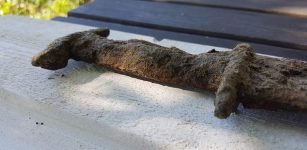 Viking Era Sword Discovered By Young Girl
Archaeology | Oct 5, 2018
Viking Era Sword Discovered By Young Girl
Archaeology | Oct 5, 2018 -
 Archaeologists Discover Ancient Mayan Board Game – Here’s What It Can Teach Modern Educators
Featured Stories | May 19, 2023
Archaeologists Discover Ancient Mayan Board Game – Here’s What It Can Teach Modern Educators
Featured Stories | May 19, 2023 -
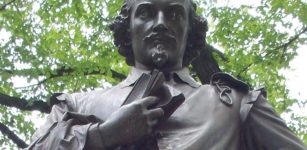 On This Day In History: Great English Dramatist And Poet William Shakespeare, Was Probably Born – On Apr 23, 1564
News | Apr 23, 2016
On This Day In History: Great English Dramatist And Poet William Shakespeare, Was Probably Born – On Apr 23, 1564
News | Apr 23, 2016 -
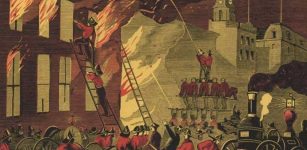 Ancient Inventions Of Firefighting Vehicles
Ancient History Facts | Feb 16, 2016
Ancient Inventions Of Firefighting Vehicles
Ancient History Facts | Feb 16, 2016 -
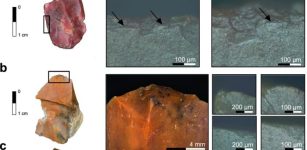 Life Of Earliest Modern Humans In Europe Revealed By Excavations Conducted In Romania
Archaeology | Aug 24, 2022
Life Of Earliest Modern Humans In Europe Revealed By Excavations Conducted In Romania
Archaeology | Aug 24, 2022 -
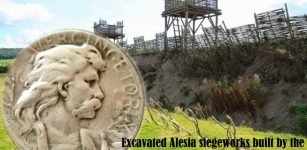 Siege Of Alesia: Last Decisive Battle That Ended Gallic Independence In France And Belgium
Featured Stories | Feb 1, 2017
Siege Of Alesia: Last Decisive Battle That Ended Gallic Independence In France And Belgium
Featured Stories | Feb 1, 2017 -
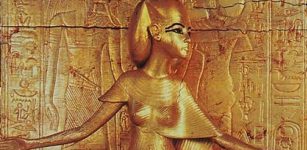 Serket: Scorpion Goddess Who Could Heal Poisonous Bites And Sting Evildoers
Egyptian Mythology | May 17, 2019
Serket: Scorpion Goddess Who Could Heal Poisonous Bites And Sting Evildoers
Egyptian Mythology | May 17, 2019 -
 Are The Ten Commandments Based On The Forty-Two Principles Of Maat That Appeared 2,000 Years Earlier?
Biblical Mysteries | Jul 15, 2017
Are The Ten Commandments Based On The Forty-Two Principles Of Maat That Appeared 2,000 Years Earlier?
Biblical Mysteries | Jul 15, 2017 -
 Kuthodaw Pagoda – ‘The World’s Largest Book’ Carved In 729 Marble Slabs
Featured Stories | Feb 24, 2018
Kuthodaw Pagoda – ‘The World’s Largest Book’ Carved In 729 Marble Slabs
Featured Stories | Feb 24, 2018 -
 Humans In Africa Fled To The Mountains During The Last Ice Age
Archaeology | Aug 9, 2019
Humans In Africa Fled To The Mountains During The Last Ice Age
Archaeology | Aug 9, 2019 -
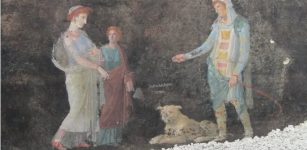 Amazing New Frescoes With Mythological Individuals Discovered At Pompeii
Archaeology | Apr 11, 2024
Amazing New Frescoes With Mythological Individuals Discovered At Pompeii
Archaeology | Apr 11, 2024 -
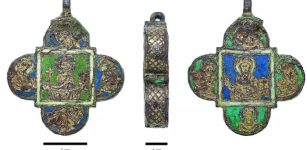 Bone Fragments Found Inside Mysterious Medieval Pendant
Archaeology | Jan 5, 2023
Bone Fragments Found Inside Mysterious Medieval Pendant
Archaeology | Jan 5, 2023 -
 Sed Festival – Ancient Egyptian Ritual Tested Pharaohs
Ancient History Facts | Mar 28, 2018
Sed Festival – Ancient Egyptian Ritual Tested Pharaohs
Ancient History Facts | Mar 28, 2018 -
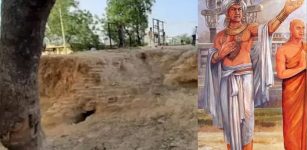 Discovered 2000-Year-Old Mauryan Structure May Lead To The Lost Ashoka Pillar Site
Archaeology | Sep 30, 2021
Discovered 2000-Year-Old Mauryan Structure May Lead To The Lost Ashoka Pillar Site
Archaeology | Sep 30, 2021 -
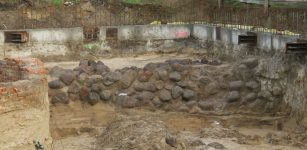 Massive Ancient Fortifications Reveal Poznan Was Poland’s First Capital
Archaeology | Jul 2, 2020
Massive Ancient Fortifications Reveal Poznan Was Poland’s First Capital
Archaeology | Jul 2, 2020 -
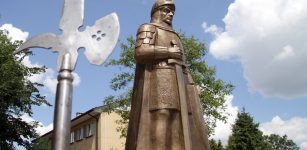 Zawisza Czarny: Most Famous Polish Knight And The Quest For His Family Home
Featured Stories | Apr 26, 2016
Zawisza Czarny: Most Famous Polish Knight And The Quest For His Family Home
Featured Stories | Apr 26, 2016 -
 Remote North Atlantic Islands Were Settled By An Unknown Group Of Humans Centuries Earlier Than Thought
Archaeology | Dec 27, 2021
Remote North Atlantic Islands Were Settled By An Unknown Group Of Humans Centuries Earlier Than Thought
Archaeology | Dec 27, 2021 -
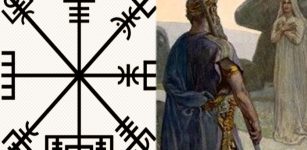 Vegvisir – Old, Sacred Norse Symbol Of Protection And Guidance
Ancient Symbols | May 23, 2020
Vegvisir – Old, Sacred Norse Symbol Of Protection And Guidance
Ancient Symbols | May 23, 2020 -
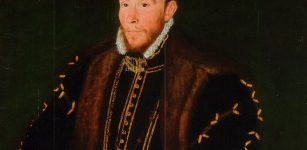 On This Day In History: ‘Earl of Northumberland’ Thomas Percy Executed Because He Was Catholic – On August 22, 1572
News | Aug 22, 2016
On This Day In History: ‘Earl of Northumberland’ Thomas Percy Executed Because He Was Catholic – On August 22, 1572
News | Aug 22, 2016 -
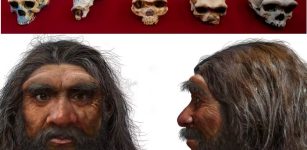 Homo Longi: Extinct Human Species That May Replace Neanderthals As Our Closest Relatives
Evolution | Sep 14, 2023
Homo Longi: Extinct Human Species That May Replace Neanderthals As Our Closest Relatives
Evolution | Sep 14, 2023
